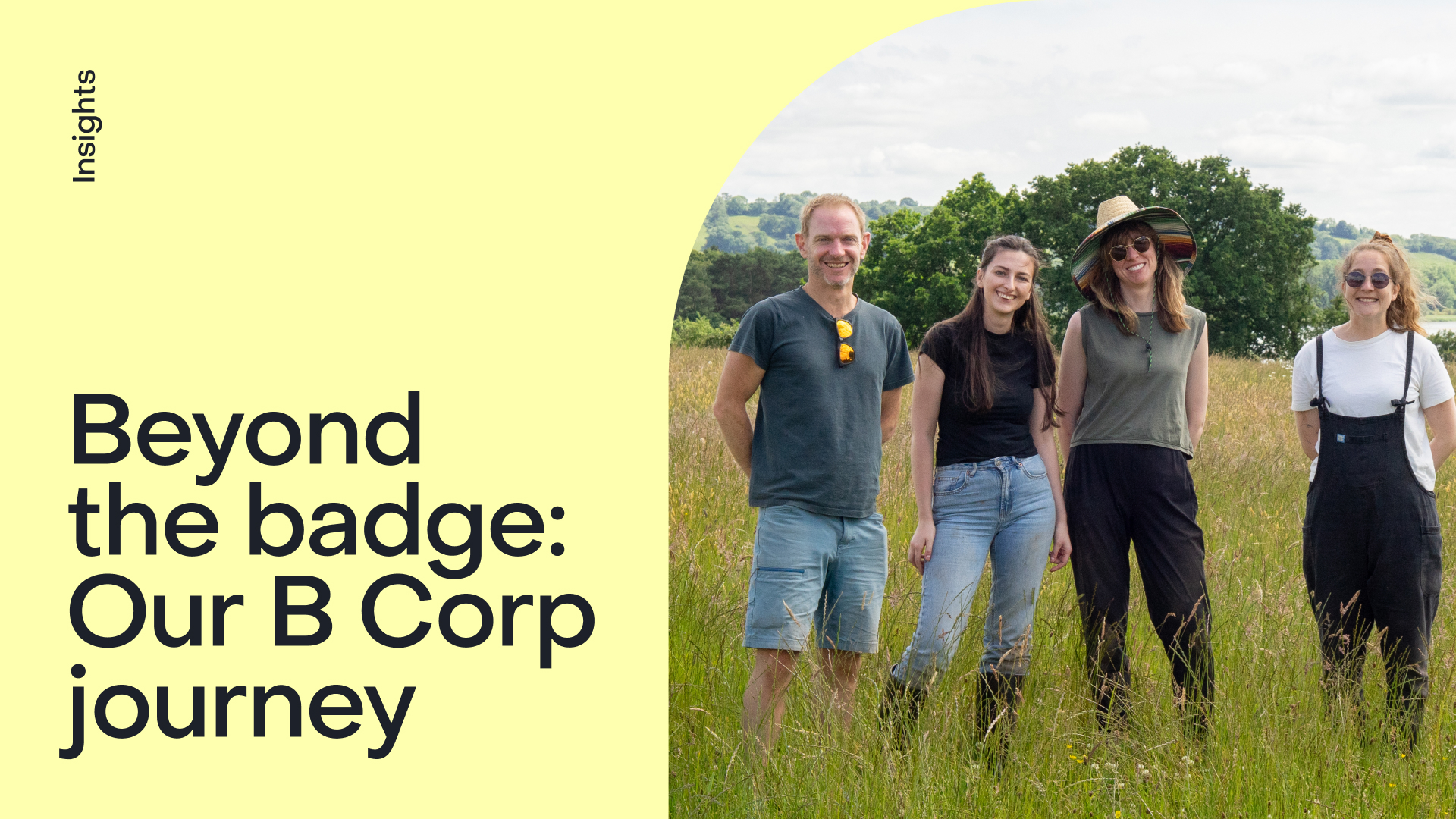Brush up and play your part in fighting the plastic crisis
With billions of pounds of plastic entering the ocean every year, can something as small as ditching the toothbrush really make an impact? Here we take this seemingly small, innocuous item and use it as an entry point – revealing how others are reframing everyday items in the fight against global plastic pollution.

Evie Grove

Here we take this seemingly small, innocuous item and use it as an entry point – revealing how others are reframing everyday items in the fight against global plastic pollution.
It all starts with a pinch of perspective…
The challenge we face
When it comes to the toothbrush, the biggest challenge we face is that many standard types are non-recyclable, due to the composite plastics most are now made of. These plastics are difficult, if not impossible, to break apart efficiently.
Quick fire fact – if we each use a single toothbrush for a period of 3 months, it means we’re disposing of approximately 200 million brushes each year. Most of which have an estimated life span of forever.
So, hats off to the diligent design community for refusing to brush off their responsibility, as they reimagine this fundamental daily feature – so it puts less stress on our planet.
Bamboo v Bio Plastics
Bamboo
One such innovation is the Bamboo Toothbrush, which has become quite the phenomenon in recent years.
This fast-growing material is a natural resource. It requires little water to produce and involves no pesticides or herbicides.
Research also shows that bamboo absorbs as much as 12 tonne of Carbon Dioxide per hectare, per year. With 1,200 variant species adaptable to any given climate, this makes bamboo incredibly accessible and advantageous.
Does this mean we should all rush out to purchase a bamboo variant? Where raw materials are involved, we must remain contentious when it comes to mass consumerism and the demands it puts on production.
For example, the majority of commercial scale bamboo production remains in China. This means that such a high-demand product is increasingly shipped across the world – contributing to an increased carbon footprint.
Larger areas of land are also cleared to plant bamboo as part of a monoculture.
This creates problems for fungi, bacteria, insects, and smaller animals – who rely on a diverse ecosystem in their habitat. So, there is still some work to do in making this great raw material truly sustainable on a global scale.
Plant-based plastics
Bioplastics are another innovation being leveraged and made available to us all – in way of resolving the issues composite plastics pose.
Generally, the manufacturing of bioplastics emits less greenhouse gases.
Compared to petrol-chemical based plastics, it can be two thirds to three quarters more carbon efficient.
However, 45% of these are still not biodegradable. This is mainly due to the ethylene used being formed into polyethylene – the exact same chemical compound found in non-degradable plastic.
Those that are recyclable are forms of extracted sugar, from plants like corn and sugarcane. These are then converted into polylactic acids, which return the carbon the plants absorbed while growing when they degrade – rather than emit it.
This all sounds great. Until we scale up.
As per most plastic-based solutions, there is still a danger to the environment if waste isn’t regulated accordingly.
Degradable plastics must be sent to compost in a specific amount of time (often 3 months) and exposed to specific conditions (Industrial Composting Facility). Unless this happens, it’s back to square one, creating the same issues as fossil-based plastics.
Pollution from fertilizers and land diverted from food production also remain a notable concern. Using corn for plastic production, instead of a food source, raises a debate on how best to allocate and use resources in an increasingly food-scarce world.
As with any crop growth, we must also consider water usage, acreage applied and where it is grown – as all can have a positive or negative impact on both environment and community.
We cant brush off our responsibility
Although we still face many hurdles with this, as well as many other household items, the fact remains there is still hope.
Any option that reduces the total amount of material used, and packaging applied is a step in the right direction.
By getting us all thinking about the plastic items we encounter on a day-to-day basis, we can then begin together to take incremental steps towards finding great alternatives. Ultimately resulting in a much larger impact when it comes to the wellbeing of ourselves and the world we share.
Want to know how you can make a difference? Head over to https://www.plasticfreejuly.org/ to join millions of people reducing their plastic waste – becoming part of the solution to plastic pollution.
Also check out our ‘Join The Fight Against Plastic Waste’ social posts, for more ways you and your family can make a change via your daily habits and choices.


.jpg)